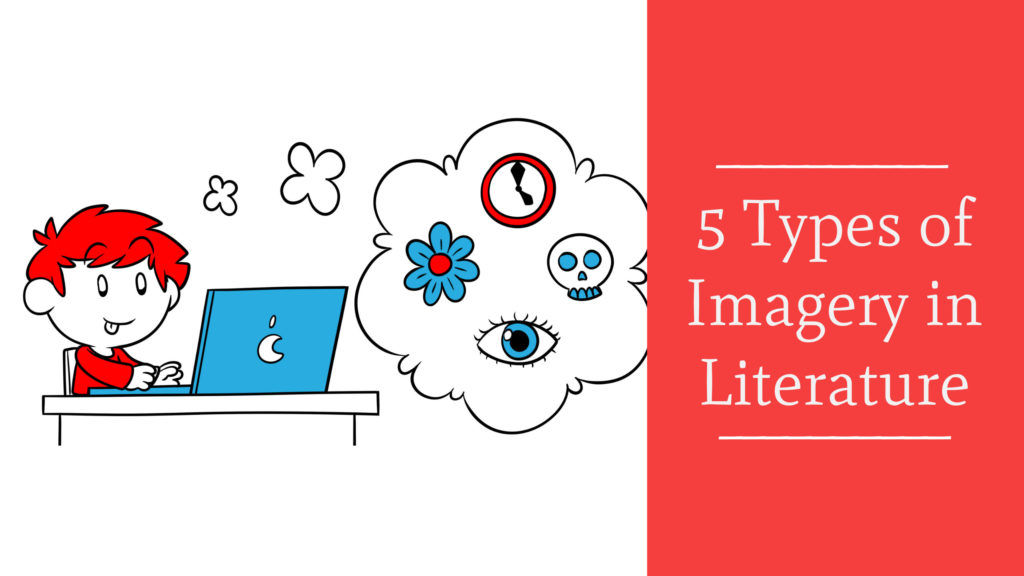We have a huge list of books especially novels (fiction and non-fiction) that have the potential to transport you to some imaginary places or in your dream world. While reading the books you might feel that you are standing alone in the streets of Edinburg and using old currencies or sipping a tea. This happens because of the words and phrases used by the author to make us actually experience what is written in the book. You might think that it is much more than just a picture or an imaginary sound.

There are five different imagery in the literature that will take your hand, help you breathe in a deep sigh of contentment or also help you to get your senses to ride through each of these five different forms of imagery.
1. Visual Imagery
In English literature, it is one of the most common imagery. In the core, you might have observed that every story will have five major elements ie introduction, rising actions, climax, falling action, and resolution. These elements are interrelated to each other provided with different images of the characters and scenery. All these things will make the visual imagery very common and paramount. The authors of the book describe a person’s character, appearance or a situation in a very interesting way. For instance, an author has described a woman’s appearance with words “Jenny was beautiful with chestnut brown hair with glimmering golden hues”. This will help you to imagine the story character or relate to someone in your real life.
2. Olfactory Imagery
This type of imagery is getting popular because of the reader’s always find a strong link to the past. With a single smell of our grandmother’s favorite flower you can take yourself back in time. And it is no surprise that authors want to tap into some of those last moments you make your reading experience more and more interesting.
3. Gustatory Imagery
Now this is something related to your taste buds. Whenever you smell some good food you feel like grabbing it and swallowing it in just one go. This is because of the sense of taste. With the help of this taste buds, the author will try to take you down the sensory highway. For instance, if you imagine that you are eating French fries then you would also wish to add some spices and butter to it and make it even tastier. All this can happen just in your imagination.
4. Tactile Imagery
This will be working hand in hand with your sense of touch. For instance, if you are reading a book that mentions some Shop clerk in a European country is enveloping his customer in a handmade cashmere wrap and the soft silk wool breeze is brushing against his arms. OR “A little girl is walking through the highlands and falls down and gets bruises on her elbow.
5. Auditory Imagery
Now this is the fifth one in the row, that will appeal to your sense of hearing. You can imagine a sweet and happy couple having a scoop of tasty ice-cream and listen to the puppy in the middle of the night. They hear the puppy because his yipping was tearing the eardrums and also their hearts. Now the couple can imagine the pain of the puppy by the intensity of his yipping. This is called Auditory Imagery.
Literature Fun: You don’t always need a movie to take you on the sensory ride. You can take your favorite novel and just dive into it. With the help of it, you can experience the things that are yet to be explored.
Keep exploring English with EnglishBix!

